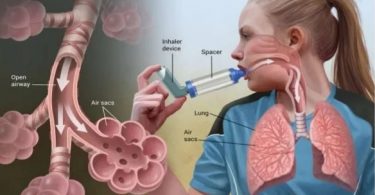Introduction:
Warts are benign lesions that occur in the mucosa and skin. The human papillomavirus (HPV), of which there are over 100 varieties, is the cause of warts. HPV can appear anywhere. Common warts, genital warts, flat warts, deep palmoplantar warts (Myrmecia), localized epithelial hyperplasia, epidermodysplasia verruciformis, and plantar cysts are the main signs and symptoms of HPV infection. Both direct and indirect contact can spread warts. The risk of acquiring warts increases in response to events that compromise the natural epithelial barrier. The course of treatment could be challenging. Within a few years, warts frequently disappear on their own. Malignancies have been linked to certain high-risk HPV subtypes, such as types 6, 11, 16, 18, 31, and 35. Immunocompromised individuals and those with genital warts are typically the ones that experience malignant transformation.The carcinogenic potential of HPV types 5, 8, 20, and 47 can result in epidermodysplasia verruciformis.
Etiology:
The HPV virus has more than 100 subtypes, but only a small number of these can result in skin warts at particular anatomical locations. On the other hand, HPV can spread to any area of the body through skin contact. Genital warts, flat warts, and palmoplantar warts are frequently brought on by HPV. Direct or indirect contact can readily spread warts, particularly when the usual epithelial barrier is compromised. In addition to skin, mucosal membranes can get warts. HPV typically only affects the skin’s epithelial layers; systemic spread is extremely uncommon. The virus is known to reproduce at the higher level of the epithelium, although the viral particles also can be discovered in the basal layer.
- HPV types 2, 4 (the most prevalent) are linked to common warts; types 1, 3, 27, 29, and 57 are next in line.
- The causes of flat warts are kinds 3, 10, and 28.
- Type 1 is the most prevalent source of deep palmoplantar warts; types 2, 3, 4, 27, and 57 are the next most common forms.
- Type 60 is the cause of cystic warts.
- The causes of focal epithelial hyperplasia are types 13 and 32.
- Type 7 is the cause of butcher’s warts.
Epidemiology:
Medical problems with warts are widespread, particularly in White people.
Frequency
10% of people globally are estimated to be affected with warts. The incidence among school-age children might reach 10% to 20%. Those who handle meat and immunosuppressed people are more likely to have them.
Age
Any age can develop a wart. While uncommon in the first few years of life, prevalence rises in school-age children and reaches its peak between the ages of 12 and 16.
Race
White people are twice as likely as Black or Asian people to get warts. Inuit and American Indians have a higher prevalence of focal epithelial hyperplasia, often known as Heck disease. Sex
There is about equal male to female ratio.
Pathophysiology:
Out of the 100 subtypes of HPV, a few of them have the propensity to induce cancer. These subtypes include HPV strains 6, 11, 16, 18, 31, and 35. Malignant transformation tends to occur in individuals with genital warts and those who are immunocompromised. HPV strains 5, 8, 20, and 47 also have malignant potential in individuals with epidermodysplasia verruciformis.
Warts, in general, are benign, but there are reports that sometimes they may become malignant and develop into what is known as verrucous carcinoma. The verrucous carcinoma is a slow-growing tumor and is classified as a well-differentiated squamous cell malignancy that is often mistaken for a common wart. Even though it can occur on any part of the body, it is most common on the plantar surface. Verrucous cancer rarely spreads, but it is locally destructive.
Histopathology:
Common wart (Verrucca vulgaris)
Histopathologic features include acanthosis, digitated epidermal hyperplasia, papillomatosis, compact orthokeratosis, hypergranulosis, tortuous capillaries within the dermal papillae, and vertical tiers of parakeratotic cells with red blood cells entrapped above the tips of the digitations. Elongated rete ridges may point radially toward the center of the lesion. In the granular layer, cells infected with HPV have coarse keratohyalin granules and vacuoles surrounding wrinkled-appearing nuclei. Koilocytic cells are pathognomonic.
Butcher’s
Butcher’s warts have acanthosis, hyperkeratosis, and papillomatosis. Small vacuolized cells are seen, and centrally located shrunken nuclei may be identified in clusters within the granular layer rete ridges.
Filiform
Filiform warts appear similar to common warts, but they may have prominent papillomatosis.
Focal Epithelial Hyperplasia (Heck disease)
Focal epithelial hyperplasia is characterized by acanthosis, blunting, hyperplastic mucosa with thin parakeratotic stratum corneum, anastomosis of rete ridges, and whiteness of epidermal cells due to intracellular edema. Some may have prominent keratohyalin granules, and vacuolated cells may be present.
Deep Palmoplantar
Deep palmoplantar warts are similar to common warts except the lesion lies deep to the plane of the skin surface. The endophytic epidermal growth has the distinctive feature of polygonal, refractile-appearing, eosinophilic, cytoplasmic inclusions made up of keratin filaments, forming ringlike structures. Basophilic parakeratotic cells loaded with virions and basophilic nuclear inclusions and may be in the upper layers of the epidermis.
Flat
Flat warts are similar to common warts in light microscopy. Cells with prominent perinuclear vacuolization around pyknotic, basophilic, centrally located nuclei can be in the granular layer. These are referred to as “owl’s eye cells.”
Cystic
A cyst wart is filled with horny material. The wall is composed of basal, granular, and squamous cells. Many epithelial cells have large nuclei and clear cytoplasm with eosinophilic inclusion bodies. The cyst may rupture causing a foreign body granuloma.
History and Physical:
The majority of warts do not cause symptoms. However, they do cause cosmetic disfigurement and, in a rare patient, may cause localized pain. Plantar warts can be painful because of compression and extensive friction that can lead to bleeding. If the plantar wart is large, it can even impair a patient’s ambulation and ability to wear shoes.
On physical exam, the common wart may appear as a papular growth with an irregular contour and surface. They may range in size from 1 mm to several centimeters. The majority of common warts are seen on the lower and upper extremities.
Common warts around the lips and eyelids may be thin and long. Those on the plantar surface may be mistaken for a callous. They tend to be deep and painful when palpated.
Flat warts appear as fleshy growths ranging in size from 1-7 mm and may number hundreds in number.
Butcher’s warts are seen in individuals who handle raw meat products. These warts tend to have a cauliflower-like appearance and tend to be large.
Focal epithelial hyperplasia includes warts that occur in the oral cavity. These small lesions appear as whitish papules, measuring 1-5 mm in size and arranged in groups.
Cystic warts tend to appear on weight-bearing surfaces like the sole and have a smooth appearance.
Evaluation:
The diagnosis of a wart is usually made on a clinical examination and physical findings.
Laboratory Studies
Immunohistochemical detection of HPV structural proteins confirms the presence of a virus, but this has poor sensitivity. Viral DNA identification using Southern blot hybridization is more sensitive and specific for HPV type. Polymerase chain reaction amplifies viral DNA for testing. Although HPV can be detected in younger lesions, it is not always present in older lesions.
Procedures
A biopsy is obtained if doubt exists regarding the diagnosis. The paring of a wart often reveals tiny black dots that represent thrombosed capillaries.
Treatment / Management:
Treatment options after a diagnosis are determined by the patient’s choices, symptoms, and financial situation. Warts have numerous therapies available, but none of them are particularly successful, and recurrences are a common side effect of each one. Generally speaking, the least invasive and painful course of action should be taken initially.
Treatments for many recurring warts are typically more costly and invasive. A crucial component of treatment is observation, which should never be overlooked. Within a year, about two thirds of warts are reported to spontaneously disappear. The one drawback is that there’s a chance the wart can get bigger and possibly spread to other places. Topical agents are typically used initially. A frequent first-line treatment for common warts is salicylic acid. It requires no prescription and can be used by the patient at home. The cure rates range from 50% to 70%. Other treatments include interferon, imiquimod, topical 5-fluorouracil, podophyllin, retinoic acid, and cryotherapy.
Cidofovir has been used to treat CMV infections in HIV-positive patients, and case studies indicate that it might help those with resistant warts.
5-Fluorouracil has been used to cure warts under occlusion for 30 days and to treat actinic keratosis.
The vitamin A derivative, tretinoin, has been used with partial success to treat flat warts.
It has also been reported that intralesional injections of bleomycin, interferon alfa, and immunotherapy (candida) are effective in certain patients.
Systemic treatments that have been tried include cidofovir, cimetidine, and retinoids.
Nonpharmacological therapies that are also used include adhesiotherapy, hypnosis, hyperthermia, propolis, and a number of plant extracts. Without controlled trials and the fact that warts do resolve spontaneously, it is difficult to say if these treatments actually work.
Surgical treatments include cryotherapy, laser, electrodesiccation, and excision.
Differential Diagnosis:
- Molluscum contagiosum
- Seborrheic keratosis
- Lichen planus
- Squamous cell cancer
- Keratoacanthoma
Prognosis:
Since about two thirds of warts disappear on their own over a period of years, it is challenging to determine whether a therapy is effective. Usually, when warts go away on their own, there is no lasting damage. But practically all topical treatments have the potential to leave moderate-to-severe scars. What’s more, therapy failures frequently result in pain and serious deficiencies in cosmesis. Common warts rarely undergo malignant alteration, although they can occasionally develop into verrucous carcinoma, which is most frequently found on the plantar surface.
Treatment of wart by using homoeopathic medicine:
1. Thuja Occidentalis- Excellent Medicine to treat Warts
For warts, Thuja Occidentalis is a fantastic medication. Large, pedunculated, or seedy warts are indicative of Thuja Occidentalis use. Any body part that develops a wart can benefit from its treatment. Warts may also cause skin dryness. When skin is touch-sensitive in addition to having warts, thuja is also advised. It is also one of the most well-known homeopathic treatments for anogenital warts.
2. Causticum- Homeopathy remedy for warts and skin tags
A great homeopathic treatment for skin tags and warts is causticum. When there are big, jagged warts, it works incredibly well. The majority of warts on the face, lips, nose, and eyelids can be treated with causticum. Additionally, it is a fantastic treatment for warts on finger tips. Causticum is also recommended for painful warts. Another useful remedy for pedunculated warts is causticum.
3. Nitric Acid- For Easily Bleeding Warts
An great medication for easily bleeding warts is nitric acid. Washing or touching a wart might cause bleeding. Additionally recommended for warts that are touch-sensitive is nitric acid. It also aids in the treatment of warts that itch. Aside from this, nitric acid is also a useful treatment for warts that sting or hurt to stitch.
4. Lycopodium Clavatum with Dulcamara – For Face Warts
Lycopodium and Dulcamara are effective medications for treating facial warts. Dulcamara is an excellent medication for large, smooth, or flat warts on the face. Lycopodium is a medication used to treat tiny or pedunculated warts on the face. Although Lycopodium Clavatum is a treatment for warts on any place but it works amazingly for healing warts on the chin.
5. Nitric acid and causticum – For Warts on Eyelids
Causticum is an extremely helpful medication for eyelid warts, particularly those that are large and nasty. Eyelid warts can occasionally cause pain as well. Warts that appear on the eyebrows can also benefit from the application of causticum. Large, jagged warts on the eyelid can be treated with nitric acid. They might bleed readily and be sensitive.
6. Antimonium Crudum and Silicea – For Plantar Warts on the Soles of the Feet
Wonderful treatments for plantar warts, or warts on the soles of the feet, include Antimonium Crudum and Silicea. Antimonium Crudum is recommended for horny warts on the soles among others. Additionally, it is effective when warts and corns appear on the same foot sole. Foot pain is another possibility. When there is heavy perspiration on the feet and warts on the soles, silicea is chosen.
7. Sepia with Causticum – For Head Warts: Sepia is a well-known treatment for head warts. It’s also possible to feel cold on top of the head. In certain instances, warts and hair loss with sensitivity of the hair roots may coexist.
It is also effective in treating warts that appear on the forehead. Causticum is a recommended medication for big warts on the head. Additionally, it is recommended for head warts that bleed often.
8. Dulcamara with Causticum – For Finger Warts
The most effective homeopathic treatments for finger warts are causticum and delicata. The effective treatment for horny warts on fingers is causticum. Causticum is particularly helpful for periungual warts, which are warts on fingers that are next to the nails. For the homeopathic treatment of smooth, flat warts on the fingers, use dulcamara. Additionally, Dulcamara may be beneficial for warts on the palmar surfaces of the hands.
9. Sepia- Regarding Moles and Warts
Sepia is an important medication for moles and warts. The patient with sepsis has little, rough, seedy warts on their face in addition to moles. There may be itching associated with the warts. There may also be yellow-brownish pigmentation on the face, primarily on the cheeks and nose. On the face, black pores can occasionally be seen as well.





